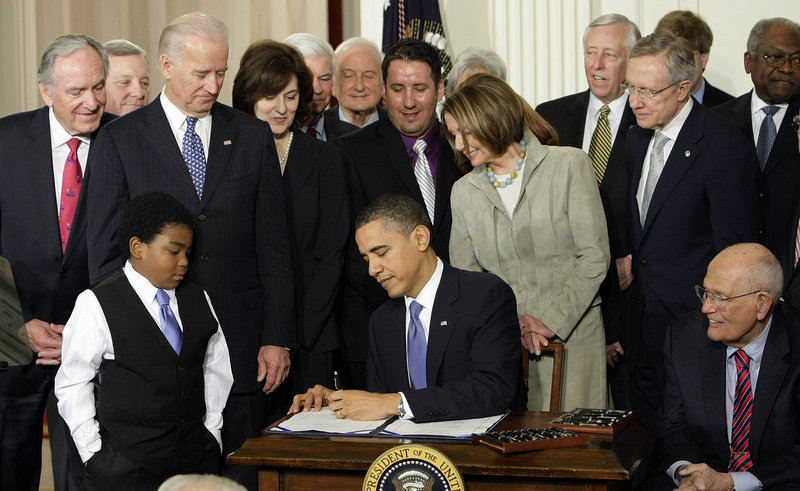WASHINGTON – Millions of people who take advantage of government subsidies to help buy health insurance next year could get stung by surprise tax bills if they don’t accurately project their income.
President Obama’s new health care law will offer subsidies to help people buy private health insurance on state-based exchanges, if they don’t already get coverage through their employers. The subsidies are based on income. The lower your income, the bigger the subsidy.
But the government doesn’t know how much money you’re going to make next year. And when you apply for the subsidy, this fall, it won’t even know how much you’re making this year. So, unless you tell the government otherwise, it will rely on the best information it has: your 2012 tax return, filed this spring.
What happens if you or your spouse gets a raise and your family income goes up in 2014? You could end up with a bigger subsidy than you are entitled to. If that happens, the law says you have to pay back at least part of the money when you file your tax return in the spring of 2015.
That could result in smaller tax refunds or surprise tax bills for millions of middle-income families.
“That’s scary,” says Joan Baird of Springfield, Va. “I had no idea, and I work in health care.”
Baird, a health care information management worker, is far from alone. Health care providers, advocates and tax experts say the vast majority of Americans know very little about the new health care law, let alone the kind of detailed information many will need to navigate its system of subsidies and penalties.
“They know it’s out there,” said Mark Cummings, who manages the H&R Block office where Baird was getting her own taxes done. “But in general, they don’t know anything about it.”
A draft of the application for insurance asks people to project their 2014 income if their current income is not steady or if they expect it to change. The application runs 15 pages for a three-person family, but nowhere does it warn people that they may have to repay part of the subsidy if their income increases.
“I think this will be the hardest thing for members of the public to understand because it is a novel aspect of this tax credit,” said Catherine Livingston, who recently served as health care counsel for the Internal Revenue Service. “I can’t think of what else they do in the tax system currently that works that way.” Livingston is now a partner in the Washington office of the law firm Jones Day.
There’s another wrinkle: The vast majority of taxpayers won’t actually receive the subsidies. Instead, the money will be paid directly to insurance companies and consumers will get the benefit in reduced premiums.
Health care providers and advocates for people who don’t have insurance are planning public awareness campaigns to teach people about the health care law and its benefits.
Enroll America, a coalition of health care providers and advocates, is planning a multimillion-dollar campaign using social media, paid advertising and grass-roots organizing to encourage people who don’t have insurance to sign up for it, said Anne Filipic, a former Obama White House official who is now president of the organization.
The Obama administration says it, too, is working to educate consumers.
“On Oct. 1, each state will have a marketplace up and running where consumers can choose a private health insurance plan that fits their health needs and budget,” said Treasury spokeswoman Sabrina Siddiqui. “The premium tax credits will give middle-class Americans unprecedented tax benefits to make the purchase of health insurance affordable for everyone, and we will continue to work with consumers, community health organizations and other stakeholders to raise awareness and understanding of these tax benefits.”
The subsidies, which are technically tax credits because they are administered through the tax code, will help low- and middle-income families buy health insurance through the state-based exchanges. Under the new law, nearly every American will be required to have health insurance starting in 2014, or face penalties.
The enrollment season starts Oct. 1.
The subsidies are available to families with incomes up to 400 percent of the poverty level. This year, four times the poverty level is about $62,000 for a two-person family.
Copy the Story Link
Send questions/comments to the editors.



Success. Please wait for the page to reload. If the page does not reload within 5 seconds, please refresh the page.
Enter your email and password to access comments.
Hi, to comment on stories you must . This profile is in addition to your subscription and website login.
Already have a commenting profile? .
Invalid username/password.
Please check your email to confirm and complete your registration.
Only subscribers are eligible to post comments. Please subscribe or login first for digital access. Here’s why.
Use the form below to reset your password. When you've submitted your account email, we will send an email with a reset code.